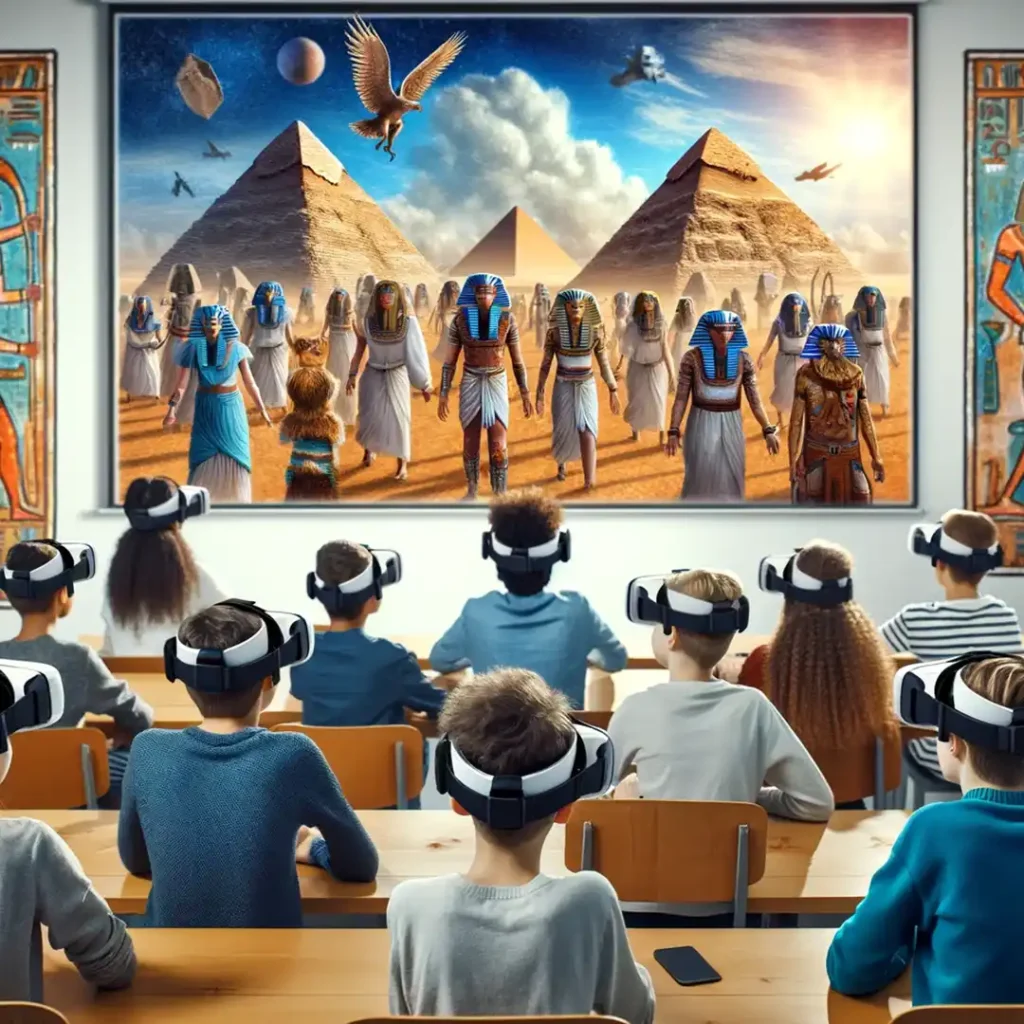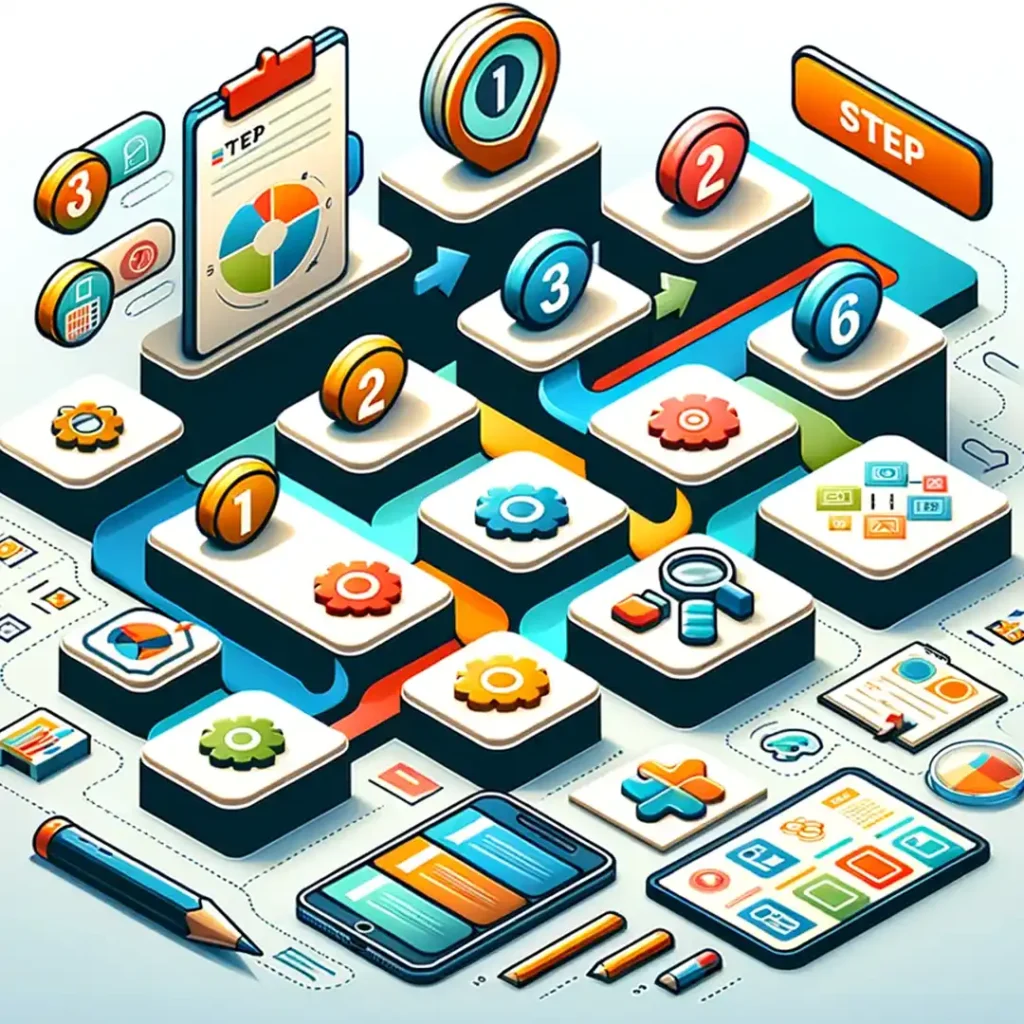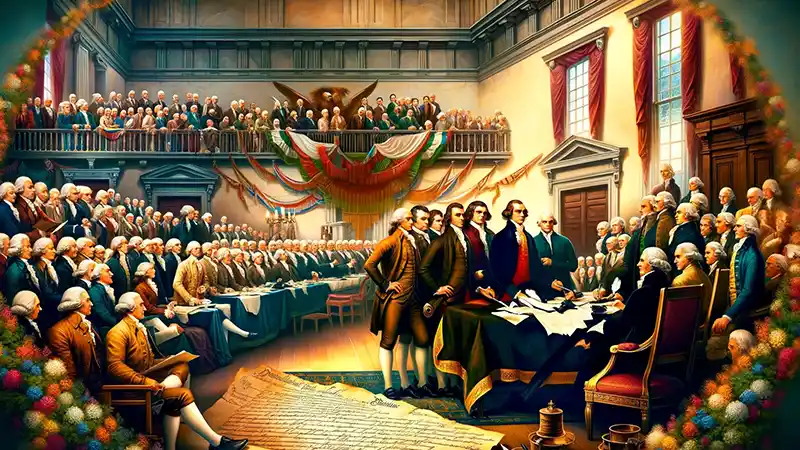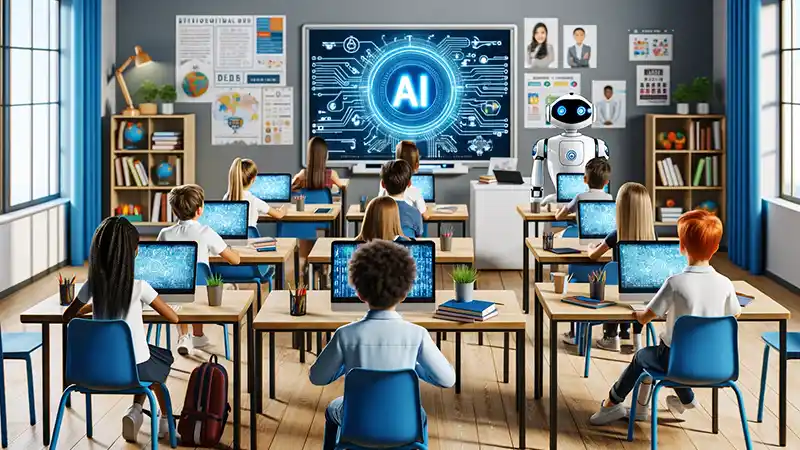In recent years, the field of education has witnessed a significant transformation, driven largely by the advent and integration of artificial intelligence (AI). This transformation is particularly notable in history education, where AI has begun to revolutionize both teaching methodologies and the learning experience. The potential of AI to change how students learn about the past is immense, offering both educators and students innovative tools to explore history in a more engaging and insightful way.
AI’s transformative role in history education is multifaceted. It ranges from enhancing the accessibility of historical documents to providing immersive experiences that were once unimaginable. Traditional methods of teaching history often rely heavily on textbooks and static lectures. AI, however, introduces dynamic, interactive elements that can make historical events come alive for students. This shift not only aids in capturing the interest of learners but also in deepening their understanding of historical contexts and events.
The promise of AI in history education lies in its ability to personalize learning. Every student has a unique learning style, and AI can adapt to these individual needs, providing customized resources and learning pathways. Furthermore, AI’s capacity for analyzing vast amounts of data means that students can access a wide range of historical documents and interpretations, fostering a more nuanced understanding of history.
In this article, we will delve into the practical ways AI can be integrated into history education. From using AI to access and analyze historical documents and data, to employing AI-driven simulations and virtual reality for recreating historical events, and utilizing AI in predictive analysis to understand historical trends, the scope is vast and deeply impactful. These innovations not only enhance the teaching and learning of history but also prepare students for a future where technology and historical understanding are increasingly intertwined.
Looking to use AI to create individual lessons? Click here for step-by-step instructions.
AI for Accessing and Analyzing Historical Documents and Data
One of the most groundbreaking applications of AI in history education is its ability to digitize and analyze historical texts, manuscripts, and archives. This process, often tedious and time-consuming when done manually, is greatly expedited by AI technologies. Advanced scanning techniques and optical character recognition (OCR) powered by AI can convert even the most delicate ancient texts into digital formats. This digitization not only helps in preserving these invaluable historical documents but also makes them more accessible to students and researchers worldwide.
AI’s role extends beyond mere digitization. Tools powered by AI are capable of translating and deciphering ancient languages and scripts, which were previously understood by only a handful of scholars. For instance, AI algorithms can analyze patterns in a text and correlate them with known languages, making it possible to translate texts that have been undecipherable for centuries. This opens up a treasure trove of historical information to students, allowing them to explore primary sources that were previously inaccessible.
Moreover, AI excels in identifying patterns and connections across vast arrays of data. In the context of history education, this means AI can assist in linking events, figures, and trends across different documents and time periods. For example, AI can analyze multiple sources to highlight common themes or contradicting narratives in historical accounts, helping students develop critical thinking skills and a deeper understanding of historical complexities.
Using AI-driven Simulations and Virtual Reality

The rise of AI-driven simulations and virtual reality (VR) has introduced a new dimension to history education, allowing students and researchers to experience historical events and environments in a deeply immersive way. The role of AI in these simulations is to create dynamic, responsive environments that adapt to the user’s actions, providing a rich, interactive experience that traditional learning methods cannot match.
The Role of AI in Creating Immersive Historical Simulations
AI is instrumental in generating detailed simulations of historical settings, from bustling ancient marketplaces to serene landscapes altered by time. These simulations are not static; AI algorithms can control non-player characters (NPCs), simulate realistic environmental changes, and allow for interactive storylines that change based on user decisions. This creates a learning environment where history is not just observed but experienced.
Examples of Virtual Reality Experiences That Bring Historical Events to Life
- Ancient World VR Tours: AI-powered VR can transport users to ancient Rome, allowing them to walk through the Forum or witness the grandeur of the Colosseum in its prime. These tours can include interactive elements, such as dialogues with historical figures or decision-based scenarios that influence the course of events.
- Historical Battle Reenactments: VR simulations can place users in the midst of historical battles, where they can understand the strategies and tactics used. AI-driven characters can behave as soldiers would have during the battles, making the simulation a powerful learning tool.
- Cultural Heritage Sites Exploration: Users can explore reconstructions of heritage sites that have been damaged or lost to time, such as the palaces of ancient Mesopotamia or the Library of Alexandria, engaging with the environment in a way that books or videos cannot replicate.
Discussion on the Educational Benefits of Interactive and Engaging Historical Reenactments Using AI and VR
The educational benefits of using AI and VR in history education are substantial. These technologies:
- Enhance Engagement: By providing an active role in learning, students become more engaged with the material. They are not merely passive recipients of information but active participants in the historical narrative.
- Improve Retention: Immersive experiences have been shown to improve memory retention. When students are part of a historical event, they are more likely to remember details and understand the significance of what they are learning.
- Encourage Empathy and Understanding: By “living” the experiences of people from the past, students can develop a deeper empathy for them and a better understanding of the historical context of their lives and decisions.
- Allow Exploration of Counterfactual Histories: AI-driven simulations can enable students to explore “what if” scenarios, helping them understand the complex web of causality in history and how different choices could have led to different outcomes.
- Support Diverse Learning Styles: VR caters to visual and kinesthetic learners by providing a visual and physically interactive environment, complementing reading and lecture-based learning.
AI in Predictive Analysis and Understanding Historical Trends
The field of historical research has always grappled with the enormity and complexity of data. AI has the potential to cut through this complexity by employing predictive analysis, enabling historians to discern patterns and trends that might otherwise remain obscured. This capability allows for a more data-driven approach to understanding history, offering new insights into the causes and effects of historical events.
How AI Analyzes Historical Data to Predict Trends and Outcomes
AI algorithms are particularly adept at processing and analyzing large datasets — far beyond the capacity of human researchers. By employing machine learning techniques, AI can identify trends, correlations, and patterns in historical data. This includes economic data, census records, climate patterns, and more. By analyzing this data, AI can help historians to build models that simulate potential outcomes based on historical trends. This predictive analysis is invaluable in understanding how certain events unfolded and in teaching the importance of various factors in shaping historical developments.
Use Cases Where AI Has Provided New Insights
- Climate and Historical Crop Yields: AI has been used to predict historical climate patterns and their impact on agriculture. By analyzing historical weather data, AI can help researchers understand how climate variability influenced famine, migration, and economic conditions.
- Epidemiological Studies: In studying the spread of historical pandemics, AI models can analyze the rate of disease spread, mortality rates, and the impact of public health interventions, providing insights into how diseases have shaped population demographics and social structures.
- Economic History: AI can analyze financial records, trade logs, and market prices to understand economic trends, such as the causes of economic crises and the long-term impacts of policy decisions.
The Potential of AI in Teaching Causality and Interconnectivity
AI’s predictive analysis offers a powerful tool for teaching students about causality in history. By modeling historical events, AI can demonstrate how certain conditions or decisions were likely to lead to specific outcomes. This helps students grasp the concept of historical causality — the idea that events occur as a result of complex, interwoven factors, rather than in isolation.
Furthermore, AI can uncover the interconnectedness of historical events. It can show, for example, how economic conditions in one part of the world can affect political outcomes in another, or how technological innovations can spur social changes. This holistic view of history helps students understand the global nature of human society and the ripple effects of events and decisions.
By employing AI in predictive analysis, educators can provide students with a nuanced understanding of historical trends and causality. This not only aids in the comprehension of past events but also equips students with analytical tools that can be applied to contemporary issues, enhancing their ability to make informed decisions based on historical precedent.
Implementing AI in History Education: A Step-by-Step Guide

The integration of AI into history education can seem daunting, but with a structured approach, educators can effectively harness these tools to enhance the learning experience. This guide provides practical steps, resources, and tips for educators looking to incorporate AI into their history lessons.
Practical Steps for Educators
- Assess Your Needs: Begin by identifying the specific needs of your students and the objectives of your history curriculum. Determine what aspects of the subject matter could be enriched by AI.
- Understand the Tools: Familiarize yourself with the AI tools available. This includes tools for data analysis, language translation, virtual reality, and more. Understand their capabilities and limitations.
- Plan Your Integration: Decide how you will integrate AI tools into your curriculum. Will they be used for individual projects, as part of classroom instruction, or for homework assistance? Ensure that your plan aligns with your educational objectives.
- Set Up the Technology: Ensure that the necessary hardware and software are in place. This may involve setting up VR equipment, installing specific applications, or ensuring that your classroom has the required computational power.
- Create Learning Modules: Develop lesson plans that incorporate AI tools. These could involve virtual reality experiences, analysis of historical data sets, or interactive simulations.
- Train Yourself and Your Students: Provide training for yourself and your students on how to use these tools effectively. This may require dedicated sessions or workshops.
- Implement with Support: Start integrating AI tools into your teaching, providing support and guidance for students as they navigate these new technologies.
- Evaluate and Adjust: Continuously evaluate the effectiveness of AI integration and be prepared to make adjustments. Seek feedback from students to improve their learning experience.
Tips for Blending AI with Traditional Teaching
- Complement, Don’t Replace: Use AI tools to complement traditional teaching methods, not replace them. They should add value to your existing curriculum, not serve as a complete substitute.
- Focus on Interactivity: Leverage AI tools that promote interactivity and engagement. Interactive learning can improve retention and understanding of historical concepts.
- Encourage Critical Thinking: Use AI to challenge students to think critically about history. For example, after a VR experience, have students analyze the event and discuss its historical impact.
- Ensure Accessibility: Make sure all students have equal access to AI tools. This may mean scheduling time in a computer lab or providing devices for students who do not have them at home.
- Promote Ethical Use: Teach students about the ethical use of AI, including discussions about data privacy and the implications of technology on historical interpretation.
Platforms to Check Out
- Google Arts & Culture: A free version is available on Google Play and the Apple App Store. It offers virtual tours of historical sites and museums, which can be integrated into lessons for virtual field trips.
- TIME Immersive: A free version is available on Google Play and the Apple App Store. An app that uses AR and VR to bring historical events to life.
- IBM Watson: Watson’s powerful AI capabilities can be utilized to analyze historical texts and trends, offering insights that can enrich student projects and research. This is probably more for post-secondary use, but it’s interesting nonetheless.
- Microsoft HoloLens: This mixed-reality headset can be used to create immersive educational experiences, including historical simulations and interactive lessons. It’s quite expensive, but really cool!
- ZSpace: A platform that provides AR/VR experiences across various subjects, including history, enabling students to interact with historical events and artifacts in a virtual space.
- EON Reality: A free version is available on Google Play and the Apple App Store. It offers a wide range of educational AR and VR content, including historical experiences that can help bring the past to life for students.
- Nearpod: This educational platform has VR Field Trips that allow students to take virtual tours of historical sites and landmarks around the world.
- Historical Figures: A free version is available on Google Play and the Apple App Store. This is an AI-based platform that uses natural language processing to simulate conversations with historical figures, allowing students to “interview” characters from the past.
- Sketchfab: Offers a vast collection of 3D models, many of historical significance, which can be viewed in VR, providing a resource for students to explore artifacts and relics in detail.
- ThingLink: Allows the creation of interactive images and videos with tagged information, ideal for creating engaging presentations of historical content.
- Twine: An open-source tool for telling interactive, nonlinear stories that can be used to create historical simulations or explore historical outcomes based on different choices.
- The VR Museum of Fine Art: While focused on art, this VR experience can also be a valuable resource for exploring historical contexts through the lens of artistic works.
- Transkribus: A platform that uses AI and machine learning to recognize, transcribe, and search historical documents. It is particularly adept at dealing with handwritten texts and can be trained to read specific scripts.
- AntConc: A freeware text analysis software that is often used in corpus linguistics, which can be applied to historical documents for pattern finding and analysis.
- OCR.space: An OCR API service that can be used to convert scanned historical documents into text, which can then be analyzed further. It supports multiple languages and can be integrated into custom applications.
- CLARIN ERIC: A research infrastructure that provides access to digital language data (textual and spoken) and advanced tools to discover, explore, exploit, annotate, analyze or combine them, which can be used for historical language documents.
- Google Cloud Vision API: Provides powerful image analytics capabilities that can be used to OCR and analyze historical documents and images, offering insights through image recognition.
- Cytoscape: An open-source software platform for visualizing complex networks and integrating these with any type of attribute data. It can be used in historical research to map relationships and connections between entities in historical texts.
- JSTOR Data for Research: Provides a service where researchers can conduct text mining and analysis on a large corpus of academic articles, which includes historical journals and publications.
- Voyant Tools: An open-source, web-based application for performing text analysis. It can be used to analyze historical documents to find key trends, patterns, and correlations.



